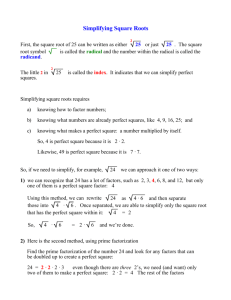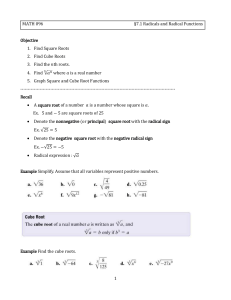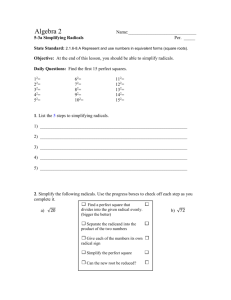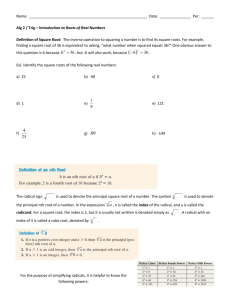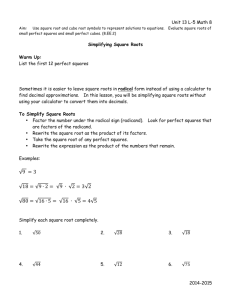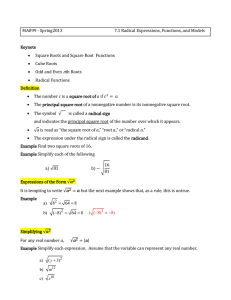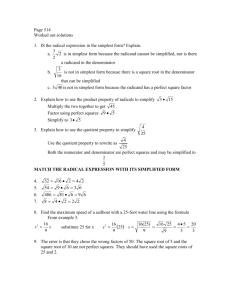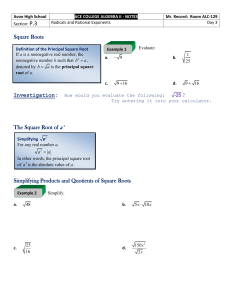Geometry: Simplifying Square Roots Lesson Plan
advertisement
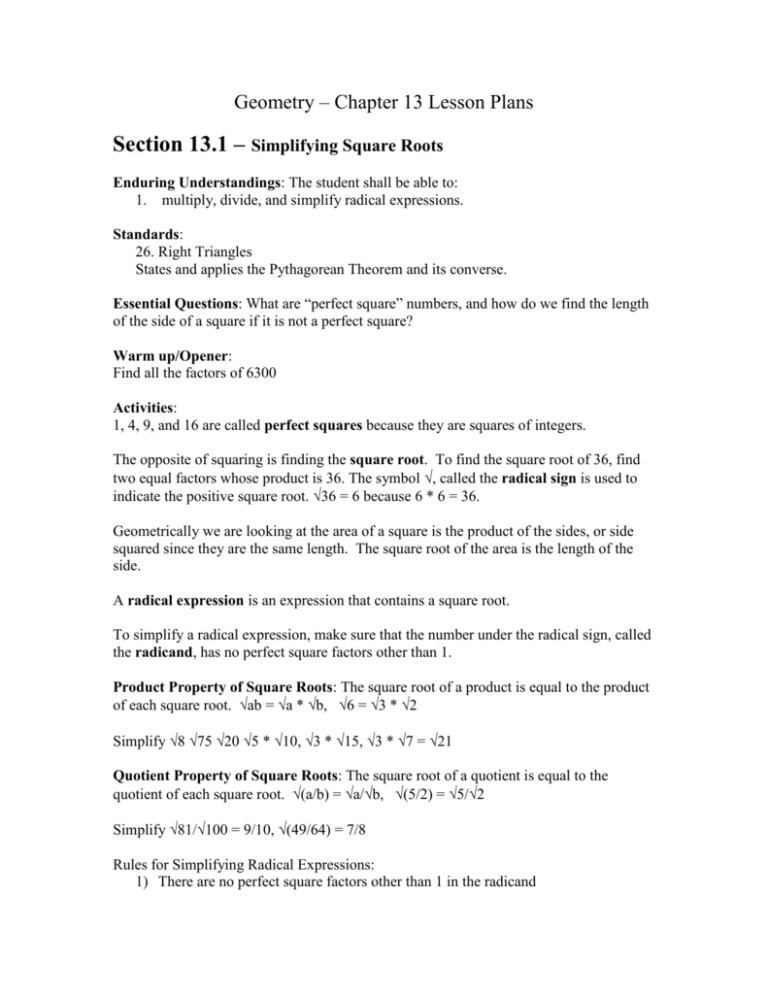
Geometry – Chapter 13 Lesson Plans Section 13.1 – Simplifying Square Roots Enduring Understandings: The student shall be able to: 1. multiply, divide, and simplify radical expressions. Standards: 26. Right Triangles States and applies the Pythagorean Theorem and its converse. Essential Questions: What are “perfect square” numbers, and how do we find the length of the side of a square if it is not a perfect square? Warm up/Opener: Find all the factors of 6300 Activities: 1, 4, 9, and 16 are called perfect squares because they are squares of integers. The opposite of squaring is finding the square root. To find the square root of 36, find two equal factors whose product is 36. The symbol , called the radical sign is used to indicate the positive square root. 36 = 6 because 6 * 6 = 36. Geometrically we are looking at the area of a square is the product of the sides, or side squared since they are the same length. The square root of the area is the length of the side. A radical expression is an expression that contains a square root. To simplify a radical expression, make sure that the number under the radical sign, called the radicand, has no perfect square factors other than 1. Product Property of Square Roots: The square root of a product is equal to the product of each square root. ab = a * b, 6 = 3 * 2 Simplify 8 75 20 5 * 10, 3 * 15, 3 * 7 = 21 Quotient Property of Square Roots: The square root of a quotient is equal to the quotient of each square root. (a/b) = a/b, (5/2) = 5/2 Simplify 81/100 = 9/10, (49/64) = 7/8 Rules for Simplifying Radical Expressions: 1) There are no perfect square factors other than 1 in the radicand 2) The radicand is not a fraction. 3) The denominator does not contain a radical expression. Simplify: 7/2 = 14/2, 4/3 = 43/3 The square root of 6300 is 307, found by factoring the 6300 into 2*2*3*3*5*5*7 and simplifying. This is used a LOT with the Pythagorean Theorem. Find the diagonal of a square that is 5 inches on a side. 7 inches on a side. 13 inches on a side. The diagonal of a square is always 2 times the length of a side. What is the classification of the triangle made by cutting a square on the diagonal? (Isosceles) What are the base angles? (45 degrees each) This is a 45-45-90 triangle. Assessments: Do the “Check for Understanding” CW WS 13.1 HW pg 552-553, # 17 - 44 by 3’s, 47 – 51 odd (13)

